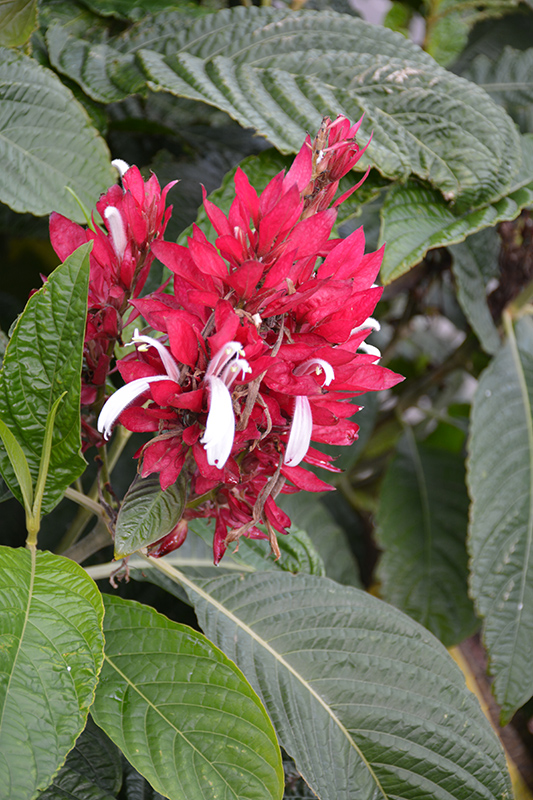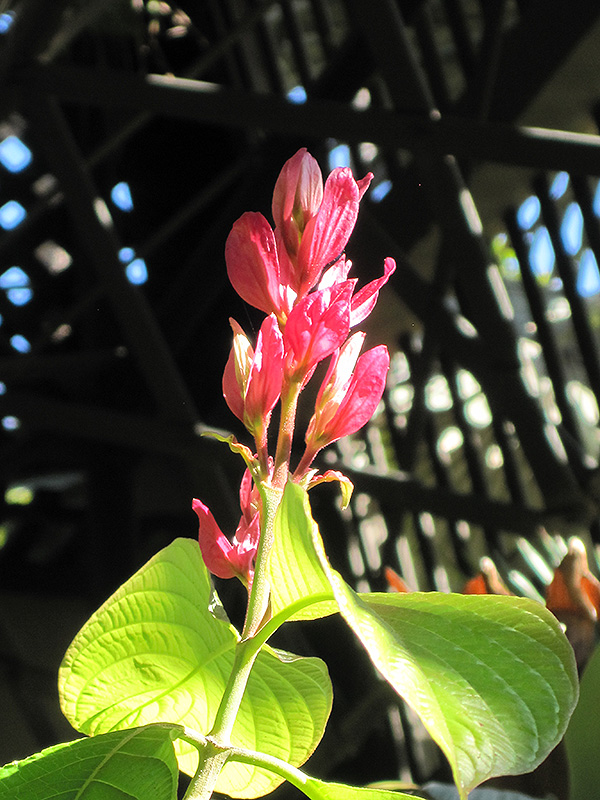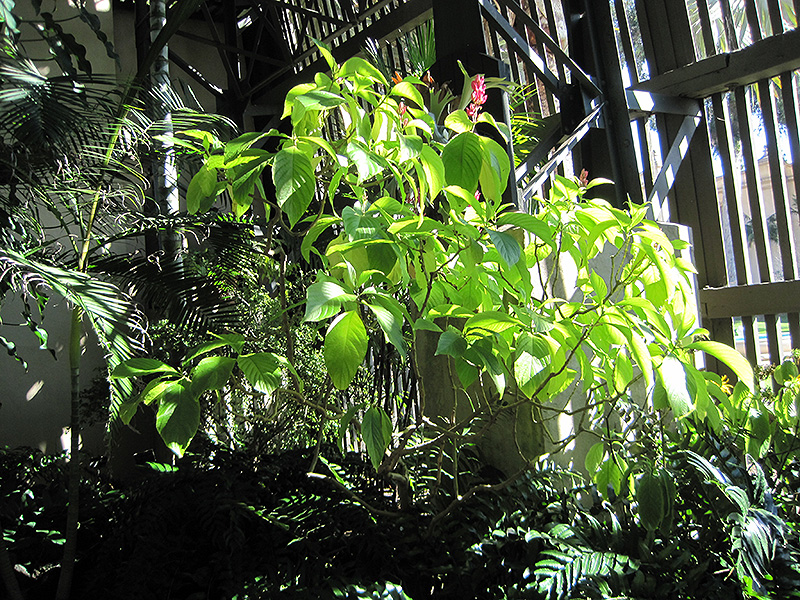Brazilian Red Coat
Megaskepasma erythrochlamys
Height: 5 feet
Spread: 3 feet
Sunlight:
![]()
![]()
Description:
A tropical evergreen shrub presenting erect spikes of flowers with showy red bracts in fall to mid-winter, with occasional year-round blooming; ovate, shiny green leaves have prominent veins; best in part shade; a beautiful indoor accent plant
Features & Attributes
Brazilian Red Coat features showy spikes of white flowers with red bracts at the ends of the branches from late fall to early spring. The flowers are excellent for cutting. Its large textured pointy leaves emerge light green, turning dark green in color throughout the year.
This is a dense multi-stemmed evergreen houseplant with a more or less rounded form. Its relatively coarse texture stands it apart from other indoor plants with finer foliage. This plant may benefit from an occasional pruning to look its best.
Planting & Growing
When grown indoors, Brazilian Red Coat can be expected to grow to be about 5 feet tall at maturity, with a spread of 3 feet. It grows at a medium rate, and under ideal conditions can be expected to live for approximately 20 years. This houseplant will do well in a location that gets either direct or indirect sunlight, although it will usually require a more brightly-lit environment than what artificial indoor lighting alone can provide. It does best in average to evenly moist soil, but will not tolerate standing water. The surface of the soil shouldn't be allowed to dry out completely, and so you should expect to water this plant once and possibly even twice each week. Be aware that your particular watering schedule may vary depending on its location in the room, the pot size, plant size and other conditions; if in doubt, ask one of our experts in the store for advice. It will benefit from a regular feeding with a general-purpose fertilizer with every second or third watering. It is not particular as to soil type or pH; an average potting soil should work just fine.
There are many factors that will affect the ultimate height, spread and overall performance of a plant when grown indoors; among them, the size of the pot it's growing in, the amount of light it receives, watering frequency, the pruning regimen and repotting schedule. Use the information described here as a guideline only; individual performance can and will vary. Please contact the store to speak with one of our experts if you are interested in further details concerning recommendations on pot size, watering, pruning, repotting, etc.
-- THIS IS A HOUSEPLANT AND IS NOT MEANT TO SURVIVE THE WINTER OUTDOORS IN OUR CLIMATE --


